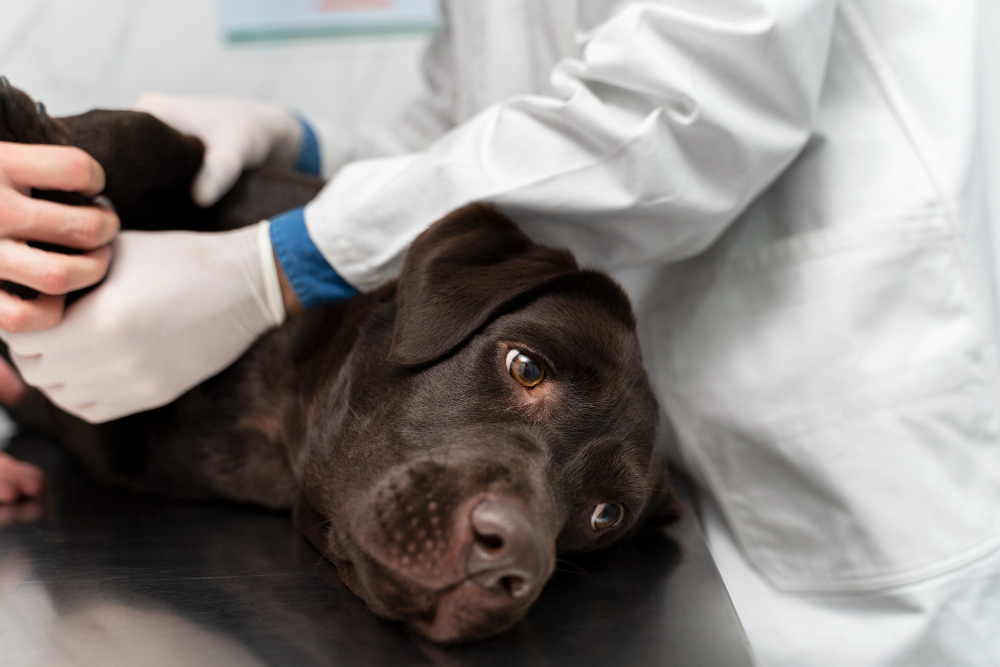Dog allergies are a common issue faced by pet owners worldwide. Understanding the causes, symptoms, and solutions for these allergies is crucial for maintaining the health and happiness of our furry friends. In this article, we will explore the most common causes of dog allergies, how to identify them, and what pet owners can do to help their pets.
What are allergies in dogs?
Allergies in dogs are a hypersensitivity reaction of the immune system to a specific substance that is normally harmless to most animals. When an allergic pet comes in contact with an allergen, their immune system overreacts, triggering a cascade of inflammatory responses that can lead to a range of symptoms. Common allergens in pets include pollen, dust mites, mold spores, certain foods, and insect bites. Symptoms of allergies in dogs and cats can vary widely, and may include itching, redness, swelling, ear infections, coughing, sneezing, vomiting, diarrhea, and skin infections.
Pollen Allergies in Dogs: When Nature Strikes
Dogs and pollen allergies often go hand in hand. Pollen, a fine powder produced by plants for reproduction, can trigger an allergic response in dogs when they come into contact with it. In some cases, the allergic reaction dogs face can cause severe discomfort, leading to symptoms like itching, redness, and inflammation.
To manage and prevent pollen allergies in dogs, pet owners should take the following steps:
- Keep their dogs indoors during peak pollen seasons
- Bathe dogs regularly to remove pollen from their fur
- Use air purifiers to reduce indoor pollen levels
- Talk to veterinarians about using atopic antiallergics
Food Allergies in Dogs: Uncovering the Culprits
A dog allergic reaction to food can cause a wide range of symptoms, from gastrointestinal issues to skin problems. The most common food allergens in dogs include beef, dairy, wheat, and chicken. In particular, chicken allergy symptoms in dogs can manifest as skin irritations, ear infections, and even vomiting.
To identify food allergies in dogs, pet owners can implement an elimination diet, which involves removing potential allergens from their dog’s diet and reintroducing them one by one to determine the cause of the allergic reaction. Additionally, working with a veterinarian to create a hypoallergenic diet can help manage food allergies in dogs. Elimination diets can be made with commercial feeds or homemade diets. But, never do it without the accompaniment of an animal nutritionist, you could cause a nutritional deficiency by doing homemade diets without the correct nutritional balance.
Pomeranian Allergy Symptoms: A Breed-Specific Focus
Pomeranians, a popular and endearing breed, unfortunately, face a higher predisposition to allergies compared to other breeds. For Pomeranian owners, staying vigilant about Pomeranian allergy symptoms is essential to ensure the health and well-being of their pets. Common symptoms in Pomeranians with allergies include persistent scratching, hair loss, and inflamed skin. Allergies and other illnesses can be avoided if the parents are carefully selected by dog breeders.
To effectively manage and prevent allergies in Pomeranians, owners can adopt the following strategies:
- Supply a premium, hypoallergenic diet to minimize exposure to potential food allergens.
- Maintain a regular grooming and cleaning routine to decrease the likelihood of skin infections.
- Collaborate with a veterinarian to devise a comprehensive allergy management plan tailored to their Pomeranian’s unique requirements.
Diagnosing Your Dog’s Allergies: Detection and Testing
Determining your dog’s allergies can be a challenge, but there are several methods available to accurately diagnose and treat them. These methods include skin tests, blood tests, and careful observation. To answer the question, “How do I know what my dog’s allergies are?” pet owners can follow these steps:
- Observe your dog for signs of an allergic reaction, such as itching, sneezing, or skin irritations.
- Consult with a veterinarian to discuss your dog’s symptoms and potential causes.
- Consider allergy testing, such as skin or blood tests, to identify specific allergens affecting your dog.
- Work with your veterinarian to develop a treatment plan, which may include medications, dietary changes, or environmental modifications.
Common Pet Allergies: Beyond Food and Pollen
While food and pollen allergies are among the most common, there are other types of pet allergies that pet owners should be aware of:
- Flea allergies: Some dogs are allergic to the saliva of fleas, causing severe itching and skin inflammation. To prevent flea allergies, pet owners should maintain a regular flea prevention regimen for their dogs, which may include oral medications, topical treatments, or flea collars.
- Contact allergies: Dogs can develop allergic reactions to substances they come into contact with, such as certain fabrics, cleaning products, or plants. Identifying and removing the allergen from the dog’s environment is the best way to manage contact allergies.
- Environmental allergies: Dogs can also be allergic to mold, dust, or other environmental allergens. Reducing exposure to these allergens by keeping your home clean and well-ventilated can help minimize allergic reactions.
Dog Allergy Treatments
To treat an allergy, you need to know the problem’s causes, which is not always easy. Treatments usually take a long time, around six months, to give good results. Therefore, it is necessary to be patient and continue the treatment, even if the results are not immediate. Always follow the guidance of the professional attending to your pet. The animal diagnosed with allergies may need continuous treatment, such as medication, special shampoos, and creams to relieve itching. Frequent trips to the veterinarian are also necessary, along with routine examinations, to monitor and prevent unwanted effects of medications.
Conclusion
In conclusion, the most common causes of dog allergies include pollen and food, both of which can lead to severe discomfort if not properly managed. Early detection and management of these allergies are crucial to ensure a happy and healthy life for our pets. By consulting with a veterinarian and following the guidance provided in this article, pet owners can take a proactive approach to understand and manage their dog’s allergies.

